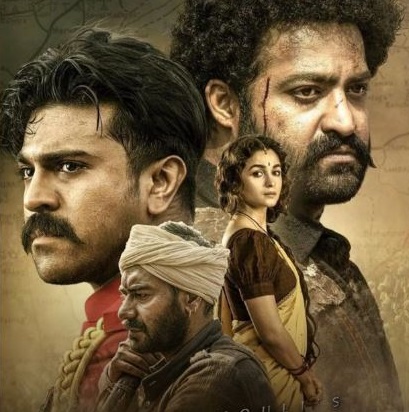Today the discussion of South Indian cinema is everywhere in the media. It is being said that Bollywood should not be scattered in this strong wind coming from the south. By the way, in recent years, films like Baahubali, Pushpa, RRR, and KGF have created a buzz at the box office and the popularity of Allu Arjun, Rashmika Mandana, NTR Jr, Sai Pallavi in the Hindi field is surprising.
These films are being called All India (Pan India) cinema. There is no denying the fact that the way ‘Puspha: The Rise’ entertained people with dance, characterization, action, songs and dialogues, the audience is eagerly waiting for the second part of the film.
But is this happening for the first time in the history of hundred years of Indian cinema that these films are making national headlines outside the regional and linguistic regions of Telugu, Tamil, Kannada, and Malayalam? Recently, when I asked the same question during a conversation with Girish Kasaravalli, the nationally-internationally famous director of Kannada cinema, he said that ‘it is true that these films have drawn everyone’s attention towards South Indian cinema and are bigger than the audience has been recognized.
But South Indian cinema has been attracting the attention of people since long. This is not a recent thing. Be it Adoor Gopalakrishnan or Pattabhirama Reddy’s Sanskar (1970), Biwi Karanth’s Chomana Dudi (1975). Other films also received pan-India recognition for their content and art. Since these films were never released on a very large scale, they did not get as much recognition from the audience as today’s films are getting.
In the seventies-eighties of the last century, films like Kasaravalli’s Ghatashtraddha (1997), Tabarana Kathe (1986) established Kannada cinema on the national-international stage. But the films of Adoor, Shaji Karun or Kasaravalli were not made in the frame of popular cinema. These films were made in the era of art or parallel cinema, whose reach was limited to a specific audience. Even today, his films are hardly available in Hindi language, whereas the films made in South Indian languages which are being discussed today were also dubbed simultaneously in Hindi language. They have also got the support of internet and OTT platforms.
However, even when technology and media had not exploded in the last century, actor-politicians like NT Rama Rao and MG Ramachandran had pan-India popularity. Incidentally, the birth centenary of Telugu cinema’s famous actor NTR is being this year, where his cinema and political life is being remembered prominently. It is noteworthy that fifty years ago, in the year 1952, when the first international film festival was organized in four metropolitan cities in India (it was also the first international film festival in Asia), it was accompanied by Raj Kapoor’s film ‘Awara’ starring NT Rama Rao. ‘Paatal Bhairvi (Telugu)’, ‘Amar Bhupali (Marathi)’ by V Shantaram and ‘Babla (Bangla)’ by Anugraha were shown.
Similarly, actors like Rajnikanth, Kamal Haasan, Chiranjeevi, Mammootty and drectors like Mani Ratnam have been ruling the hearts of Hindi audiences. It is the misfortune of Bollywood that it has not been able to make proper use of the talent of these actors. It is pertinent to add here that Mani Ratnam’s films like, Nayakan (1987), Roja (1992), Bombay (1995) were quite successful at all India level. Girish Kasaravalli however, says that ‘personally I am concerned about the content and art side of these films. They get wide audience recognition and are successful at the box office too. If a film is well crafted from an aesthetic point of view and addresses certain social issues (which are being ignored), then I think we will get something out of it’. It is also not that South Indian Cinema is located in the ‘popular frame’. Films like ‘Jalikattu’ in Malayalam, ‘The Great Indian Kitchen’, ‘Kaala’ in Tamil, ‘Jai Bheem’ and recently released in Telugu ‘Virat Parvam’ are examples of the combination of artistry and social reality is possible.




Comments are closed.